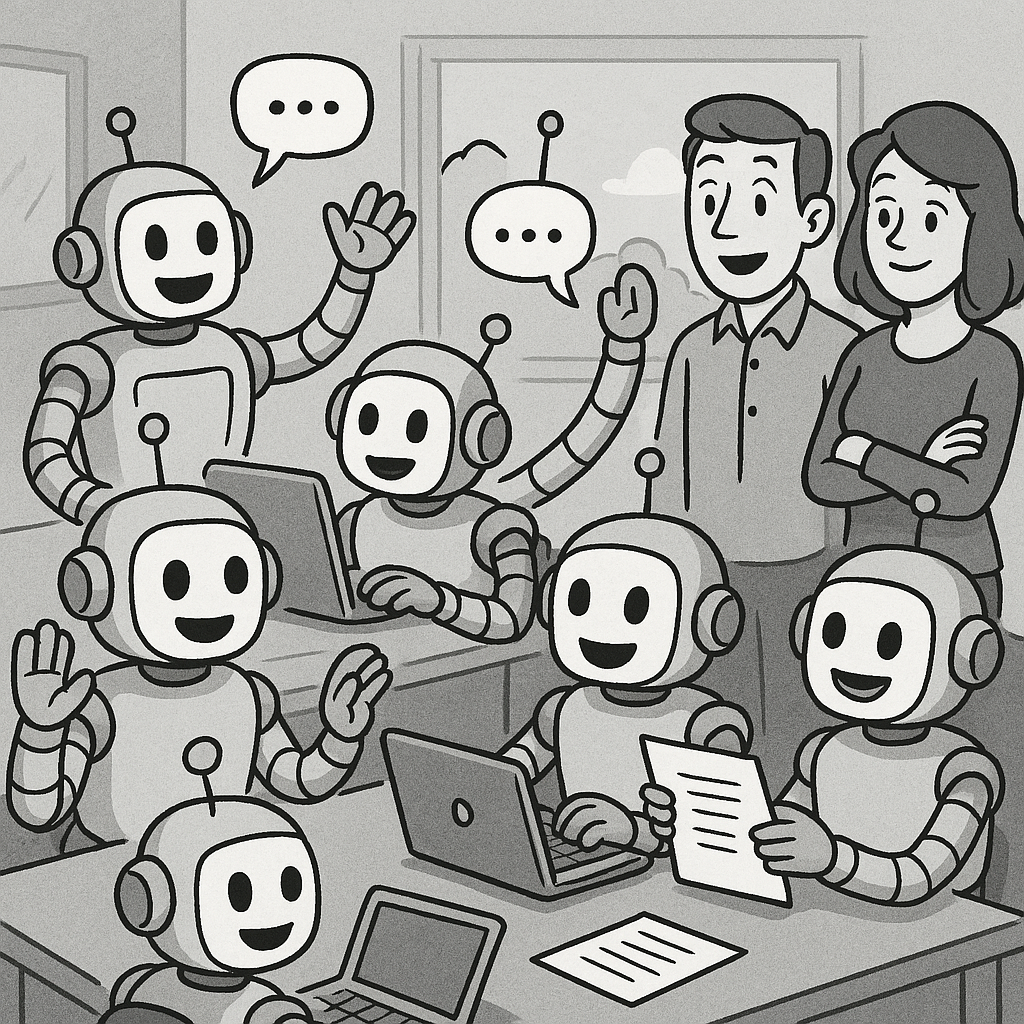Good Agents Are Sustainable: What Multi-Agent AI Can Learn from Microservices
When enterprises first embraced microservices, they were chasing agility. They wanted to move fast, scale smart, and avoid the brittle overhead of monolithic applications. They quickly discovered, however, that speed without structure leads to fragility. The same is true for AI agents.

Today, many teams build proof-of-concept LLM agents that demonstrate dazzling capabilities—but lack the architecture needed for real-world reliability and long-term sustainability.
At The Good Agents Company, we believe:
Good Agents are Sustainable. That means being built from the ground up for maintainability, transparency, scalability, and resilience—not just a great demo.
Let’s explore what this means in the context of multi-agent vs. single-agent LLM systems—and what we can learn from the software industry's shift from monoliths to microservices.
Single vs. Multi-Agent Systems: A Quick Overview
- Single-agent systems rely on one large language model to manage all tasks.
- Multi-agent systems use multiple coordinated LLMs (or specialized roles) to divide and conquer complex tasks.
Much like a monolith, a single-agent system is easier to prototype but harder to scale or troubleshoot. Multi-agent systems resemble microservices: more flexible, but more complex.
Why Good Agents Need Good Architecture
Using our Sustainability Checklist, here’s how each approach stacks up:
| Sustainability Factor | Single Agent | Multi-Agent |
|---|---|---|
| Modularity | Low: one context, one model | High: each agent has a specific role |
| Maintainability | Simpler to debug, harder to extend | More complex, but easier to evolve |
| Transparency | Centralized reasoning is traceable | Requires structured inter-agent protocols |
| Resilience | Single point of failure | Greater fault tolerance across agents |
| Cost Efficiency | Flat usage of one model | Task-specific use of cheaper or faster LLMs |
| Governance Readiness | Uniform controls | Fine-grained guardrails for each agent |
| Future-Proofing | Tied to capabilities of one model | Flexible integration with evolving LLMs |
Managing Cost and Performance
Not all LLMs are created equal. Some are fast and cheap but less nuanced. Others are slower, expensive, but highly capable.
Multi-agent architectures give teams the freedom to assign the right model to the right job:
- A lightweight LLM for formatting or simple lookups
- A premium model like GPT-4 for strategic reasoning or generation
- A domain-specific fine-tuned model for compliance or legal review
This task-specific orchestration allows organisations to manage AI spend while maintaining high performance where it matters.
Guardrails by Design
One overlooked advantage of multi-agent systems is precision control over behaviour.
Instead of applying general content filters to a monolithic agent, you can:
- Apply strict legal and regulatory filters to a compliance agent
- Give broader creative freedom to a content generation agent
- Introduce approval workflows or overrides for specific roles
In practice, this results in greater alignment with internal policies and external regulation—a crucial factor for enterprises operating in regulated sectors.
Strategic Agility in a Rapidly Evolving Space
LLMs are evolving fast. So are the frameworks used to build and manage them.
From OpenAI's tool-use agents to Google's Gemini, Meta's LLaMA, and open-source frameworks like LangGraph and CrewAI, capabilities are shifting monthly.
Multi-agent systems offer architectural agility: the ability to plug in new models or update roles without overhauling the entire system. This agility mirrors the benefits of containerised, loosely coupled microservices—allowing organisations to move quickly without breaking things.
Lessons from Enterprise Microservices
Key insights from the monolith-to-microservices transition still apply:
- Don’t Decompose Without Discipline
Microservices needed clear contracts. So do agents. Define roles, interfaces, and escalation paths. - Observability is Non-Negotiable
Every agent interaction must be traceable. Build in structured logs, agent-level telemetry, and decision reasoning chains. - Governance Must Be Embedded
Compliance and trust aren’t bolt-ons. Multi-agent systems require built-in guardrails, ethical boundaries, and continuous monitoring.
What Executives Should Ask
Before committing to an LLM architecture, ask:
- Does this design support evolving models and tools?
- Can we allocate tasks to the most cost-effective LLM for the job?
- Are roles and responsibilities clearly defined and observable?
- Can we apply targeted guardrails where needed?
- How do we scale and govern this system as capabilities evolve?
Final Thought
Proof-of-concept agents are usually impressive—but rarely sustainable.
A Good Agent is designed for the future: resilient, governable, adaptable, and cost-aware. And right now, multi-agent systems offer the clearest path to that future—just as microservices once did for enterprise software.
